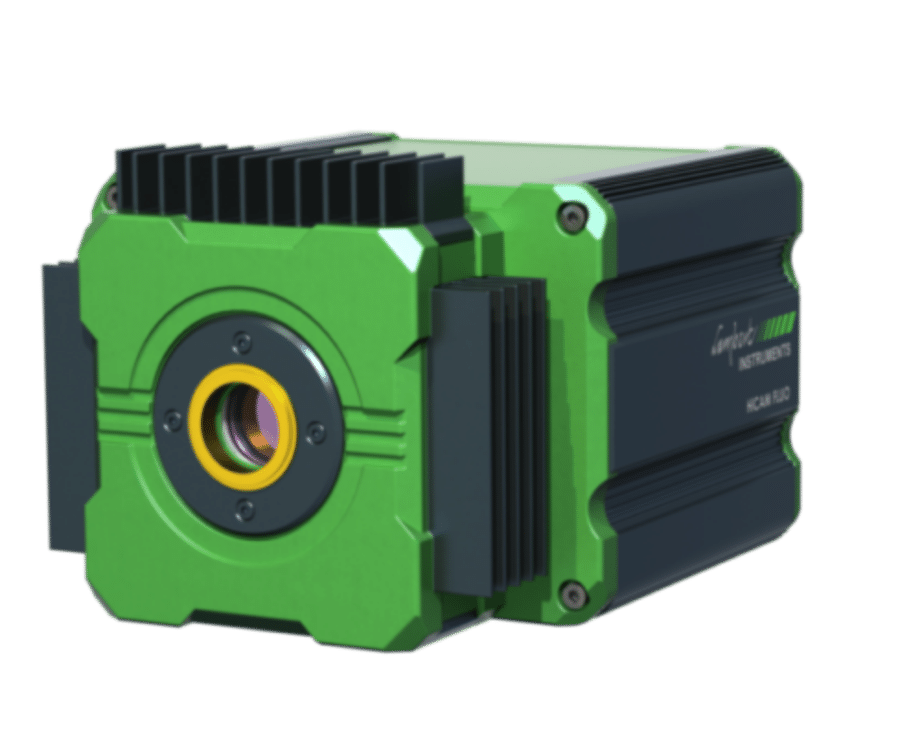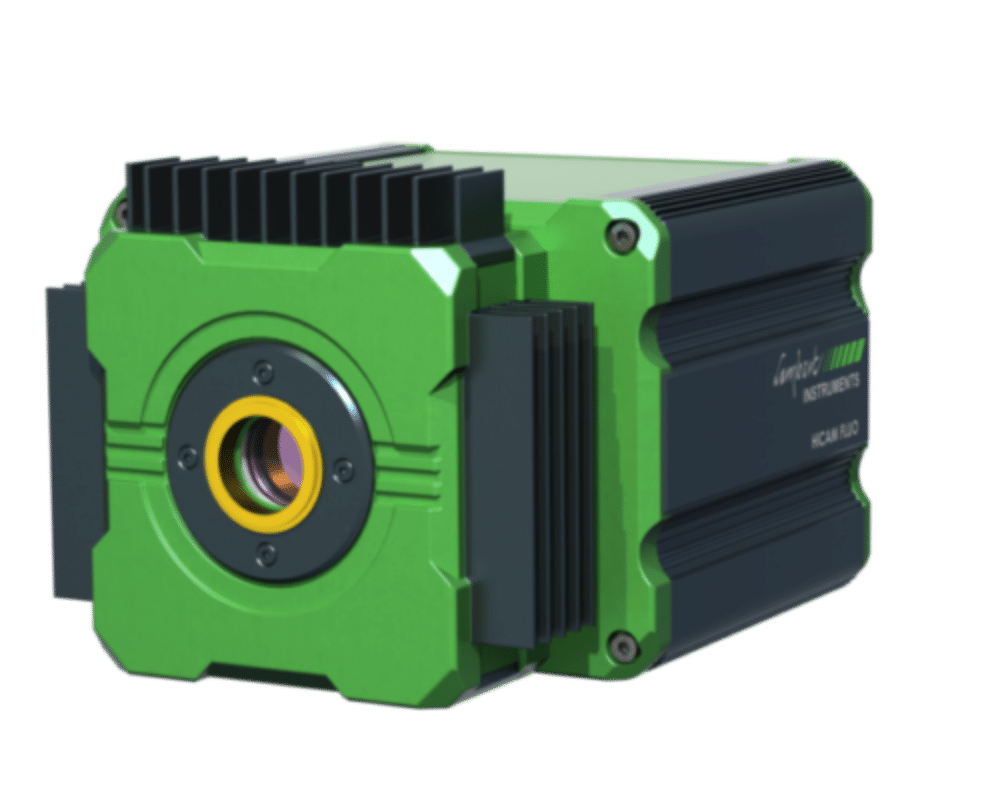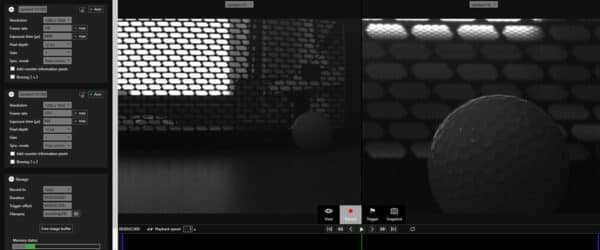HiCAM FLUO: High Speed Fluorescence Imaging at 1 KHz and Above
The HiCAM FLUO is designed specifically for high-speed fluorescence applications, capable of recording high-resolution images at up to 2,000 fps even in challenging low-light conditions. This is achieved through a cooled image intensifier, ensuring clear and detailed imaging.
Housed in a compact aluminum enclosure, the HiCAM FLUO is easy to attach to any fluorescence microscope, making it a versatile tool for your imaging needs.
Fiber-optically coupled intensifier
The HiCAM FLUO is a gated intensified high-speed camera. It features an integrated fiber-optically coupled image intensifier, combining high-speed imaging with enhanced light sensitivity down to the single photon level. This allows the HiCAM FLUO to operate effectively in low-light conditions without the need for high-intensity light sources, making it ideal for fluorescence imaging.
Cooled image intensifier
The fanless design of the HiCAM minimizes vibrations to ensure sharp images. Very low noise levels are achieved by Peltier cooling the image intensifier. Compared to uncooled intensified cameras, noise levels are reduced by a factor of up to 100 times.
Up to 2,000 fps @ 1920 x 1080 pixels & global shutter
The HiCAM Fluo captures full-resolution images at up to 2,000 fps. By reducing the image resolution and using a smaller portion of the sensor, the camera can achieve even higher frame rates. The HiCAM Fluo’s sensor has a full resolution of 1920 x 1080 pixels and utilizes an electronic global shutter, ensuring all pixels are read simultaneously to avoid rolling shutter effects. Combined with intensifier gating, the exposure time can be shortened to 3 ns.
Applications of the HiCAM Fluo include:
-
High-speed fluorescence, bioluminescence and chemiluminescence detection for in-vivo imaging
-
Time-resolved imaging of fluids for microfluidic research
-
Flow visualization and velocity measurements using Particle Image Velocimetry (PIV)
-
Time-resolved imaging and spectroscopy using ultra-short exposures
-
Laser-Induced Fluorescence (LIF)
-
Super-slow motion combustion research for the automotive industry
-
Time-resolved imaging in plasma physics research
-
Single-photon imaging for astronomy



